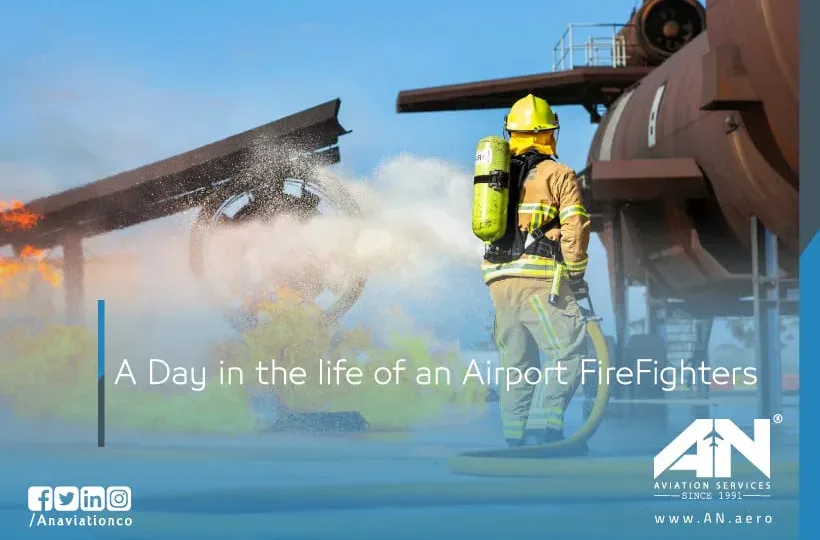
Airport firefighters play an essential and often overlooked role in ensuring the safety of thousands of passengers, crew, and staff who pass through airports daily. From managing aircraft fire emergencies to assisting during critical situations, these skilled professionals are an integral part of aviation safety. This blog provides a glimpse into the demanding, unpredictable, and heroic lives of airport firefighters as they respond to high-stakes challenges with precision and courage.
Early Start to a High-Alert Day
For most airport firefighters, the day begins early. Their shift starts with a detailed briefing, where they are updated on scheduled flights, aircraft movements, and any special situations requiring extra vigilance. Given the dynamic nature of an international airport, every day is unique, and firefighters must be prepared to handle anything from routine inspections to full-blown emergencies.
Following the briefing, firefighters inspect and prepare their specialized Aircraft Rescue and Firefighting (ARFF) vehicles, ensuring they’re in optimal working condition. ARFF vehicles are equipped with state-of-the-art technology, such as water cannons, dry chemicals, and foam systems, designed specifically for aircraft rescue scenarios.
Responding to Emergencies: Time Is Everything
When it comes to emergencies at airports, every second counts. Whether it’s a fire onboard an aircraft, a fuel spill, or an emergency landing, airport firefighters must act quickly and efficiently to protect lives. Their primary responsibility is ensuring the safety of passengers and crew while minimizing damage to aircraft and infrastructure.
In the event of an aircraft fire, firefighters mobilize instantly, deploying ARFF vehicles to the scene. The vehicles’ high-powered water and foam systems are used to suppress flames and cool down the aircraft, while firefighters work to evacuate passengers and crew. Situations like these require coordination with air traffic controllers, airport staff, and emergency medical teams to ensure a smooth and safe resolution.
Aircraft Rescue and Firefighting Training
Behind every successful rescue operation is a rigorous training regime. Airport firefighters undergo specialized training to prepare for scenarios unique to aviation. Their skill set includes understanding the structure and fuel systems of various aircraft, operating ARFF vehicles, and using dry chemicals and foams effectively.
Simulated aircraft rescue drills are conducted regularly to help firefighters practice their response under realistic conditions. These simulations include dealing with aircraft fires, smoke-filled cabins, and crash scenarios, ensuring that firefighters are equipped to handle even the most challenging emergencies.
Routine Duties: More Than Just Emergencies
While responding to emergencies is a critical part of their job, airport firefighters also perform numerous routine duties to enhance airport safety. Inspections of fire safety equipment, such as extinguishers and sprinklers, are conducted throughout the airport to ensure compliance with safety regulations.
Additionally, they monitor fueling operations, as aircraft fuel poses a significant fire risk. Firefighters are also involved in maintaining runways and taxiways to ensure that potential hazards, like oil spills or debris, are addressed promptly.
Working as a Team
Airport firefighting is not a solo job—it’s a team effort. Each firefighter has a designated role during emergencies, whether it’s controlling the ARFF vehicle, managing fire suppression, or assisting with passenger evacuation. Effective communication and coordination are critical to ensuring that all operations are carried out seamlessly.
Beyond their immediate team, firefighters collaborate closely with other airport departments, including ground handling staff, air traffic controllers, and medical teams. Together, they create a comprehensive safety network that ensures the smooth functioning of airport operations.
Challenges Airport Firefighters Face
Despite their preparedness and training, airport firefighters face several challenges. Aircraft fires are inherently high-risk due to the presence of fuel and flammable materials, and the confined spaces within an aircraft make rescue operations complex. Moreover, emergencies like crash landings can occur under extreme weather conditions, further complicating their response.
Firefighters must also contend with the emotional stress of their job. The responsibility of protecting lives in high-pressure situations requires mental toughness, resilience, and a strong sense of purpose.
A Critical Role in the Aviation Industry
Airport firefighters are a vital component of the aviation industry, ensuring the safe and efficient operation of international airports. Their dedication and expertise help create a secure environment for passengers, crew, and aircraft. Without them, the risks associated with air travel would increase significantly.
From responding to emergencies to performing routine inspections, airport firefighters exemplify professionalism and courage in every aspect of their work. Their contribution to aviation safety is immeasurable, and their role is a reminder of the many unseen efforts that keep the aviation industry running smoothly.
Final Thoughts
The life of an airport firefighter is demanding but deeply rewarding. Their ability to stay calm under pressure, act swiftly in emergencies, and prioritize safety above all else makes them true heroes of the aviation industry.
So the next time you board a flight, take a moment to appreciate the dedicated firefighters who work tirelessly to ensure your journey is as safe as possible. Their work often goes unnoticed, but it’s a crucial part of making air travel one of the safest modes of transportation.

